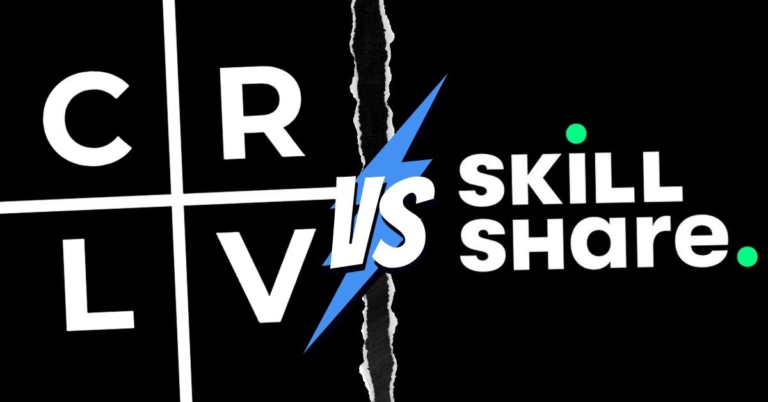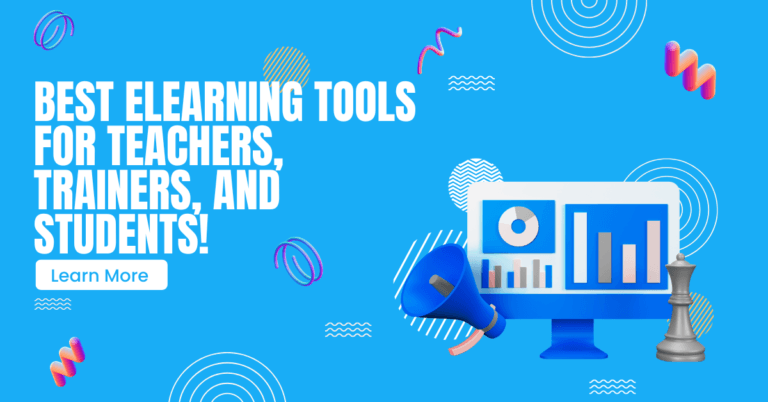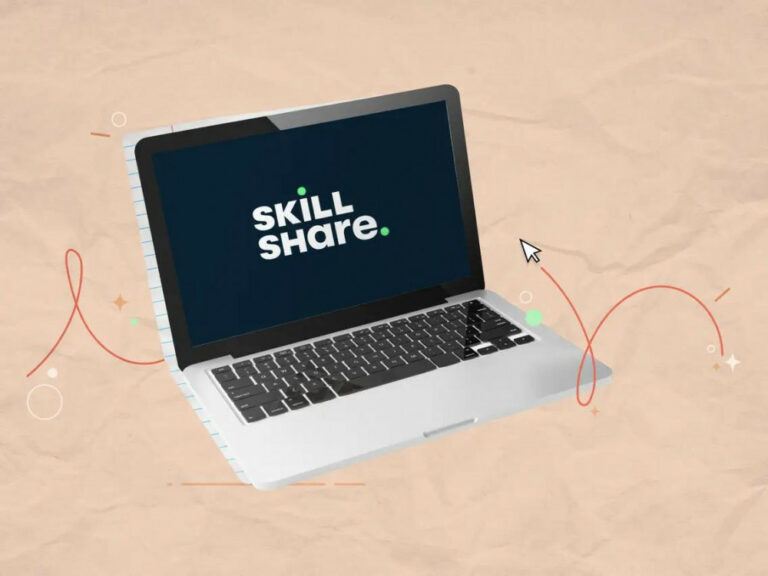Thinkific – An Easy To Follow 8 Step Tutorial
Thinkific – An Easy To Follow 8 Step Tutorial
Thinkific is a popular online platform that supplies users with a wide range of tools to create, manage, and sell online courses. It enables users to create sites that can host an unlimited number of course videos, trade, offer their content, then step forward to support an infinite flow of online learners.
Thinkific is honoured to be the leading online learning platform on the web, with more than 36,000 course-creators and over 16 million learners and students in 164 countries worldwide. There are several paid packages available as well as a free one with fewer capabilities.
Until now, tutors who have utilized the Thinkific platform have monetized over $200 million. Considering that the eLearning industry will balance $325 billion by 2025, thus there is potentially much more to earn.
So, how to create an online course? Is it as simple as many people claim?
This article supplies you with a complete step-by-step Thinkific tutorial to create an online course and create the landing page you will need to sell your programs.
Thinkific Tutorial For Creating An Online Course
Step 1: Getting Started
As mentioned above, there is a free option to start. Although this package suffers from some limitations, it is an intelligent way to test the platform before diving into it.
But you do not have to start with the free one. Instead, you can do your purchasing with any of the premium packages. In both ways, signing in will direct you to the main dashboard.
The first thing you will see is the main menu placed on the left of the screen. Go to the “Manage Learning Content” to begin and then go to the “Courses” option. By clicking on this option, a window will get open that contains several course options. Next, click on the “New Course” button on the top right to disclose the following template options:
- Blank Course: It is exactly what it seems to be. This is a blank template that enables users to create their whole learning programs from the ground up.
- Pre-sell: Presell is a little piece of a program that forces learners to sign up before finally accessing the full content. You can utilize this option to check your target market’s response and then make earnings as you upload content in the background.
- Mini-Course: As the name says, a mini-course template assists you in managing a simple course with brief content for free or at a low price. This is an intelligent way to promote your online school and creating a subscriber foundation in advance of the extended course versions.
- Flagship Course: Consider it as a mother template for all courses. It helps you manage a dynamic authority course that is full of valuable resources and multiple extras. Such a course is appropriate for someone well-established in their field and looking to put together a comprehensive learning experience.
- Webinar Replay: Do you have some clips of your past webinars? This is a good template if you like to distribute them, probably to establish possible learners.
- Digital Download: Digital Download is not for online courses in itself, but instead, it is for making a system of dividing supplementary files like presentations, video series, infographics, eBooks, podcasts, etc.
- Membership Resource Library: This is a framework that assists you in making a virtual version of a typical college library. This is actually a collection of knowledge materials that your course members can benefit from as a part of your supplementary resources bundle.
Step 2: Upload the Course Content
There are two approaches to upload your course content.
If you have a rich collection of well-organized training materials, then you are lucky to save time and avoid lots of trouble by simply uploading all of them at once. You can go to the “Bulk Importer” tab right in the course creation window.
But if you would rather go through the systematic process of uploading the elements sequentially, go to the “Curriculum” tab. This procedure is straightforward. First, you need to click on the “Add Chapter” button to create the first chapter. Then, to name the chapter, go to the “Chapter Title” field and finish creating the first chapter by clicking the save button.
Click on the “Add Content” button to add related materials to that chapter. There are 11 different content forms to select from:
- Video lessons
- Text lessons
- Survey lessons
- Quiz lessons
- Audio lessons
- Exam lessons
- PDF lessons
- Disqus lessons
- Multimedia
- Downloads
- Presentation lessons
According to the type of your digital file, select the most relevant one.
Step 3: Add A Lesson From Another Course
Fortunately, you do not have to upload all the files from your computer. If some of your needed materials are in another course, Thinkific enables you to copy them as you want.
You will see a three-dotted button next to the “Add Lesson” option. If you need to borrow materials from another course, go ahead and push the button.
In the next step, select the “Add Lesson from another Course” and then mark the source course before proceeding. Thinkific will then introduce the copy as an extra lesson to the chapter with the prefix “Copy of” in its title. Finally, go to the lesson setting to revise that.
Step 4: Configure Course Settings And Info
Once you upload the entire lessons to their respective chapters, you need to adjust the course and landing page info.
To accomplish that, go to the “Settings” tab and manage the following items:
- Basic Settings: To edit the course title, establish the URL of the course’s landing page, add the corresponding teacher, and determine if the course will be private or hidden, go to this section. If you target learners interested in a specific number of learning hours, you can also indicate the estimated time info.
- Course Image and Description: Here, you can outline a brief while detailed course description and supplement it with a relevant image.
- Course Player: Put a perfect theme that will attract your students to the course: the player's look and feel required to match your content.
- Page Code: Insert the code for your page footer.
- Admins and Revenue Partners: If you want, you can introduce other parties to assist you in managing the course and also partners you would probably like to share the income with.
- SEO: Fine-tune the landing page properly to optimize it for search engines.
Step 5: Build Your Landing Page
Up to now, it was simple and easy, but the landing page is not yet completed.
There is a button on the top right of the page named “Build Landing Page,” you will want to click to customize your page. It displays several page elements; you can configure them to convert your prospects to have them sign up as students.
The default landing page sections that you can customize by pressing on their arrows are as follows:
- Banner: An enormous image placed at the top of the landing page with a call-to-action and course title. You can take advantage of it to attract your target learners to stay on the page.
- Text: Text is the paragraphed area of your page. You will want to write a catchy and short piece that explains the whole course and encourages students to subscribe.
- Pricing Options: This part systematically indicates the main heading of each pricing package. Go to the “Pricing” tab of the course editor to edit them.
- Instructors: You already added instructors and teachers. Here you can edit their bio and upload relevant photos of them if you wish. It helps the possible learners to know exactly who will be training them.
The “Add Section” button is on top of the default elements, enabling you to introduce additional sections as you want. It is also possible to delete them or move them around to realign the whole landing page structure.
Step 6 (Optional): Set a Drip Schedule
You do not have to supply everyone with the entire course content at once. The Thinkific platform has a systematic structure that releases the course content successively based on two periodic parameters.
There are two time frames available here: student enrollment date and course release date.
You can schedule access to the course content based on the specific enrollment dates. Or select to publish the content based on the course release date instead. The later approach supplies the entire learner with uniform access to the course once content releases. Therefore, new learners who enrolled late can catch up with the rest.
Now, return to the course editor and click the “Drip” button next to “Settings” to set your preferred schedule next, press the “Create Drip Schedule” button and then select “Student Enrollment Date” or “Course Release Date” as you want.
If you prefer the first option, you have to outline the dates that various lessons will be accessible to every learner after subscription. There is a field for each lesson in Thinkific.
The second option will enable you to determine the times you will give each lesson to all your students at the same time.
Step 7: Determine Your Course Pricing
You definitely want to monetize after all these efforts you made to develop the course content. Therefore, go to the “Pricing” tab of the course editor to set your pricing options. Before you can go forward into the next step, you will be asked to connect your account to PayPal or Stripe.
Both of these integrations are good. However, if you want to set up payment packages or membership plans, you have to choose Stripe. This is the only payment processor that is empowered to support you with your plan here.
In the next step, there are four primary pricing options to select your payment structure from:
- Free: Your course will be given to the students for free. We recommend you use it when you want to grab more enrollments for your short course.
- One-Time Payment: Before enabling access to the course, you should manage a standard price with a single payment. It would be possible to limit the time period that your course content is available to the students.
- Subscription/Members: This option enables you to settle a membership framework with repeated fees every month.
- Monthly Payment Plan: The course price is divided between several months to be paid in installments.
These price settings are what you will get on the Basic Thinkific plan. But, if you have subscribed to Pro or Premier, you will have access to a more dynamic payment system by clicking the “Set Additional Pricing” option on the left side of the page. Additionally, you can establish numerous pricing packages for your subscribers.
Step 8: Publish Your Course
Now, check to see if everything is in the right order.
Are the chapters organized methodically? Are the entire lessons uploaded to their respective chapters? More importantly, is your landing page attractive enough to encourage subscribing? Are the prices competitive?
So, everything is confirmed, and you can now publish the course. choose the “Publish” tab of the course editor, and click the “Publish” button.
As you see, it is simple to make money from your knowledge. Moreover, it is a fun procedure teaching your students.
Conclusion
This Thinkific tutorial covers the course and landing page creation procedures. However, you should know that Thinkific is more than that. It is actually an extensive platform to supply resources for building and host an entire site and marketing your courses.
Thinkific is a popular online platform that supplies users with a wide range of tools to create, manage, and sell online courses. It enables users to create sites that can host an unlimited number of course videos, trade, offer their content, then step forward to support an infinite flow of online learners.
When you explore its feature, you will understand that Thinkific can support small and large-scale trainers. You can work on it as a solo teacher and make your career, or work in a team with other teachers instead.
I trust you enjoyed this article about Thinkific – An Easy To Follow 8 Step Tutorial. Please stay tuned for more articles to come. Take care!
JeannetteZ
Your Opinion Is Important To Me
I would love to hear from you. Please leave me your questions, experiences, remarks, and/or suggestions about this article on Thinkific – An Easy To Follow 8 Step Tutorial in the comments section below. You can also reach me by email at Jeannette@WorkFromAnywhereInTheWorld.com.
>>>Please click here to check out Thinkific<<<
You might also enjoy these blog posts:
The Best Online Teaching Platforms
7 Easy Tips On How To Prepare For Online Teaching















